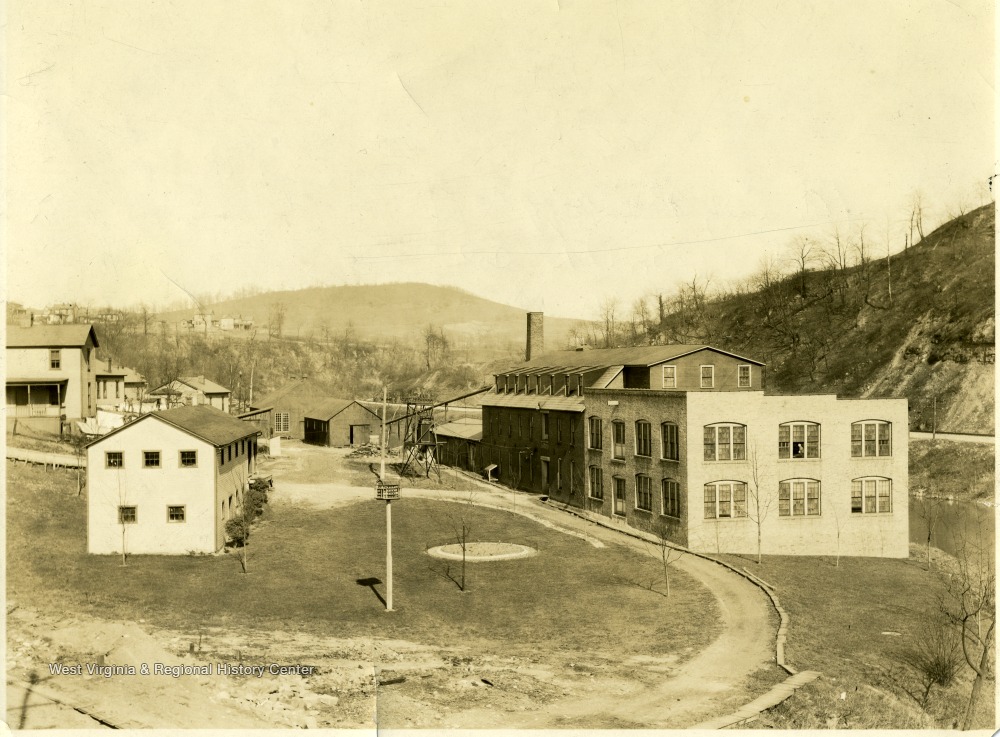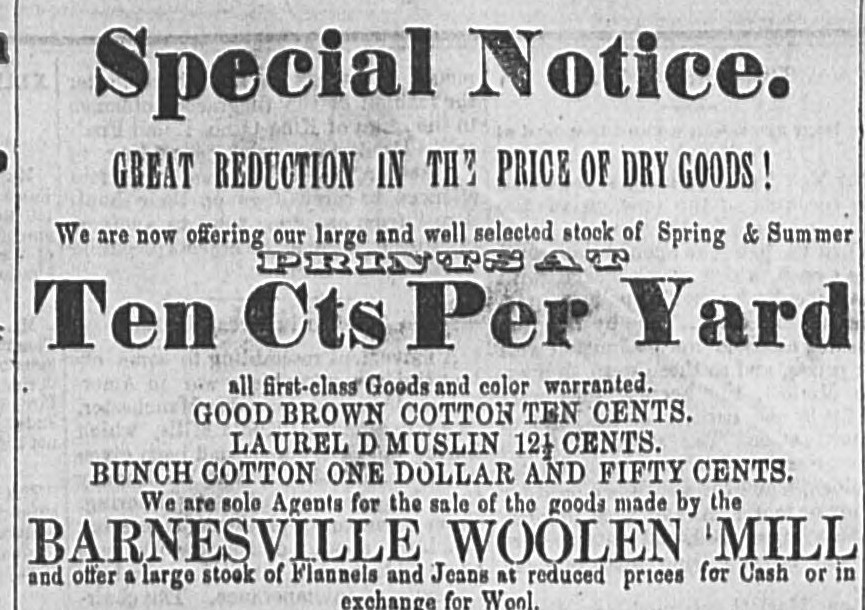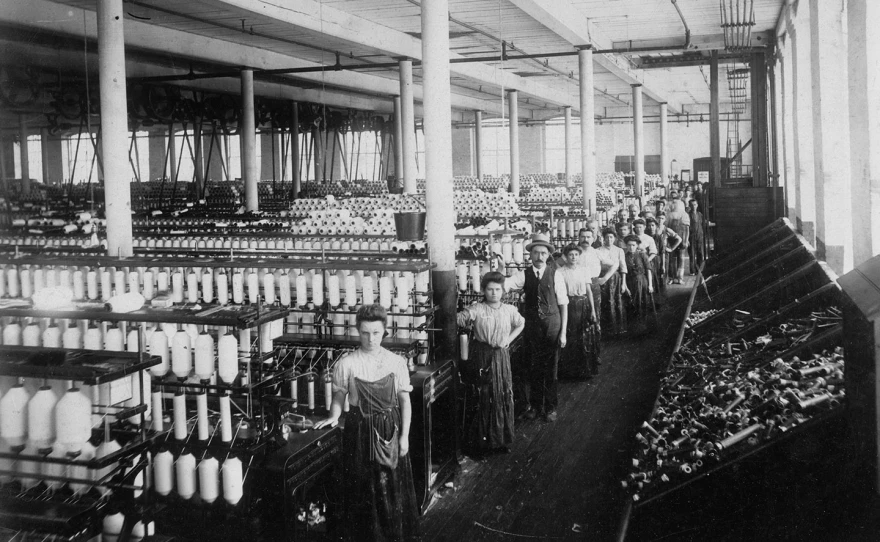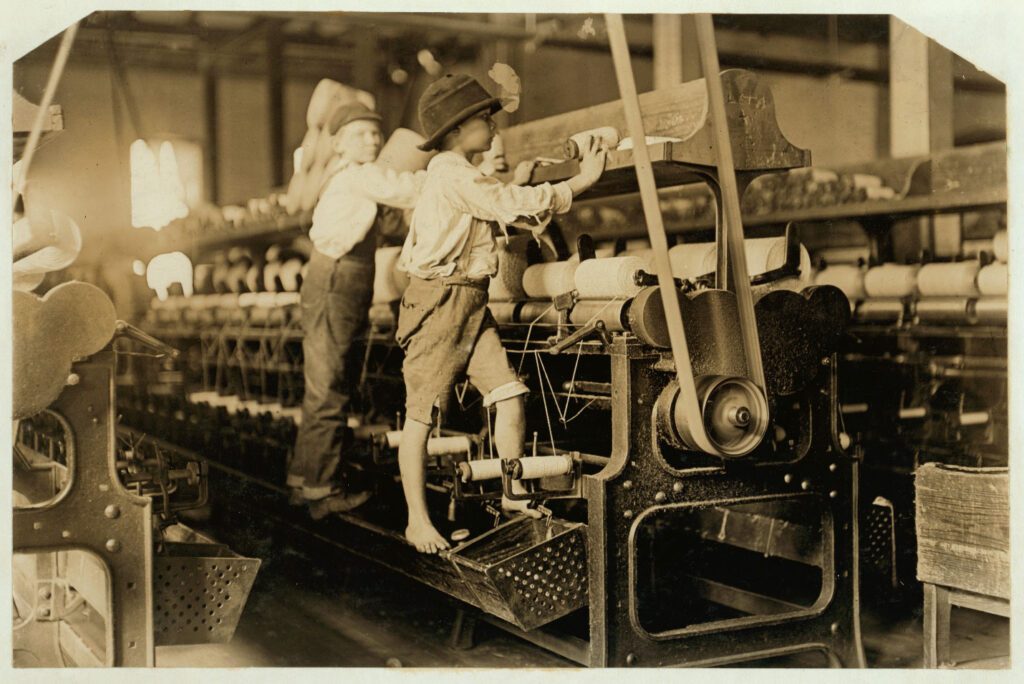
Fairmont W.V. has always been known as the “Friendly City” and a historic town. I, as well as many others, never felt it was all that historic. When I started doing this blog and studied more about my town, “Historic” is precisely as it should be described. As I write more weekly blogs, readers will find out just how a small town in West Virginia turned into a mega boomtown.
In 1852 the Baltimore and Ohio Railroad arrived in Fairmont. The new form of transportation meant more industry would be built. The Barnesville Woolen Mill was one of the first enterprises to be erected in the year 1870. When you think of wool mills, most think of the New England areas. For Fairmont to have one was unthought of at the time.
The town of Barnesville [now known as Bellview] was centrally located by the mouth of Buffalo Creek. The location was strategic for obtaining the wool and supplies needed to run the business, and with the railroad connection in the city, shipping wares made at the mill would be even more accessible.
Barnesville Woolen Mills, at the time, was just the sort of venture that would put Fairmont on the map. In 1870 there were about 2400 various mills in business in the U.S.A. Most clothing mills were in the upper New England area. Barnesville shortly became one of the biggest in clothing manufacturing. They used around 1000 pounds of raw wool daily to turn into 800 usable pounds of wool. With the thread ready to process, they required 26 looms to spin it into yarn, creating 50 yards. The next step after completing the thread is turning it into the fabric. They were able to manufacture around 1300 yards a day.
The wares made by the mill consisted of shirts, shawls, and blankets,

The mill was the supplier of workshirts for the steel mills of Pittsburgh, Pa. They also sent merchandise to New York and San Francisco, Ca. Lady’s clothing for winter was also very popular. With all this business, still, there were times the mill would have to lay people off. During the First World War, Britain, one of raw wool’s main suppliers, discontinued its shipment. The Mill would put out notices paying cash for wool. Although the mill never shut down, they may only have a staff of 15 instead of the usual 40. The pay for a worker at the time was 13 cents an hour for a 9hr day.
Burning Trouble
Barnesville Woolen Mill was one of many new businesses that Fairmont wouldn’t have had if not for coal. Coal was the driving force for the survival of all in Fairmont. Coal burns hot, very hot, and at the beginning, that and water was the power for the mill. A business that needs coal, electricity, or even gas carries fire risk. Fire in any business is awful, but in a wool mill, the material and supplies are also the kindling.
The first fire for the mill was in 1886 on the second floor of the mill by the picking machine.[ A picking machine was used to pull and stretch the wool.] As reported in the area newspapers of the time, the building was a complete loss. Estimates ranged from $16,000 to $30,000. The company had no insurance.
I’m not sure what they considered completely destroyed in that time period, for apparently, they were able to recover and rebuild. The next fire would happen not too far in the future. 1892 would bring the next blaze, and the loss would be even bigger. Damages were estimated to be around $20,000 and take away the livelihood of 50 employees. The fire was said to have started by spontaneous combustion. This time they did have $5,000 insurance on it.
Again they recovered and were good for a while, but fires are always expected with a company that deals in textiles. Even with buckets for water to help with small fires, and fire stations for larger fires, they sometimes cannot be contained. In 1900 another such fire happened. A match was dropped and burned the merchandise on the lower floor of the building where the company had their wareroom [a room in which goods are exhibited for sale] by a barrel full of paint. They did recover again. From what I read, the building was made of bricks, so I suspect only the rooms and areas were destroyed. The final fire that I found happened in 1915 in the picking room again. This time the fire department made it there so fast the damage was slight. Again they recovered and continued business.
From what I can ascertain, the mill continued to run into the mid-1900s, and as larger, more modern textile mills advanced, Barnesville could not compete.
The fires that threatened to dismantle a thriving business were no challenge to the hard-working people of Marion County, W.V. The coal business made it possible to find the money for the rebuilds, and I’m not sure businesses today would want to rebuild if fires continued to hinder their production. Or people be able to hold on till their jobs returned. I sort of doubt it. The early years of the industrial age were a special time.
Below are a couple of pictures of what the mill might have looked like inside.


I hope you’ve enjoyed looking at a piece of my hometown that wasn’t about coal per se.
I will publish a new weekly blog containing more Fairmont and Marion County history. If there is a topic you may want to explore more, please comment below, and I will research it. Please leave a comment below, letting me know if you did or didn’t like this article. It helps me improve with your suggestions.
Thank you for taking the time to read my blog, and remember: History is the spine of America; not learning from it would make us collapse and fall!

Thank you for your research and hard work.
Hi Michael,
You are so welcome. I enjoy every bit of it. Lots of more interesting reads to come. Thanks for the comment>
I am in love with your stories and topics of our hometown history! Fairmont at one time was full of all kinds of industries and different factories. I can not wait to read more!
Hi Rita, Thank you so much for your continued support. It means a lot!
Very interesting. Do you know the precise location of where the mill was? I’d like to check it out. Thanks for your informative blog
Hi George.
I do not I’m sorry. Are you familiar with the Bellview Area and know where Buffalo Creek Is? Some people tell me it was at the mouth of the river. I will keep trying to find out the correct location, and when I do, I will post it. Thanks for your comment!
Loved reading this! Thank you for the research
Hi MaryAnne,
Thank you!
Very interesting reading
Hi MaryAnne,
Thanks for the comment. It means the world to me. Comments are what keep me doing more blogs!
Keep them coming!
Love your stories!
Thank you for taking the time to enlighten us!
Hi Cathy,
Thanks for being a faithful reader!
I did enjoy reading your story . I love reading anything about Fairmont and the surrounding area. Have you ever heard about Big Elm in Enterprise wv .The big elm tree is gone now but I have heard there was always a lot of activity in that area. I have been told my fathers family settled there in the 1800s and later moved to a area that was named Everson ,WV and opened a Grist Mill .. it was distorted in a great flood in 1888. My fathers mothers father , Lewis Cass Everson, was the man’s name who started the Mill ,
Hi Barb,
No, I have never heard of Big Elm in Enterprise, But It seems there could be a story there to be told. I will also have to look up the flood in 1888. Thanks for reading, and now I have two new ideas for stories. Thanks for the ideas!
I just found your blog today. Thanks for the history. I enjoy reading stories from my hometown area.
Hi Charlotte,I have many many more stories to tell, Stay tuned!
Great Article. My Dad was born in 1908 but I never heard him talk about the Mill
Thanks for the post. Look forgot of other best kept secrets of Fairmont WV.
You are so welcome!
Oops auto check got me again. “Look forward” not “forget”!
Oops auto check got me again. “Look forward ” not “ forget”!
Thank you. I don’t think you will be disappointed!
Oops auto check got me again. “Look forward” not “forget”!
Reply
Thanks for your story! I live in Bellview and have never heard of the Woolen Mill. So interesting! I love reading about Fairmont’s history and look forward to your future articles.
Hi Connie, Thanks so much for your comment. There are so many stories that Fairmont has hidden and forgotten. I hope to uncover them and bring them into the light. Glad you enjoy my articles and look forward to hearing from you again!